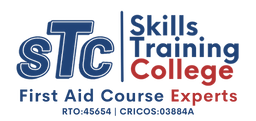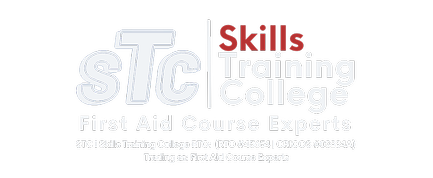How Do I Preform DRSABCD Resuscitation Step By Step
What does DRSABCD mean? It looks like a jumble of letters that make no sense, yet they are the foundation for saving a life.
Some people like to break DRSABCD down into two parts DRS ABCD. However you choose to remember it, what you are committing to memory is the mnemonic to apply to all life-threatening conditions and situations a First Aid responder encounters.
· DANGER
· RESPONSE
· SEND FOR HELP
· AIRWAY
· BREATHING
· COMPRESSION /CIRCULATION OF BLOOD
· DEFIBRILLATOR / AUTOMATED EXTERNAL DEFIBRILLATOR
By applying the DRSABCD practice, you significantly reduce the level of panic around what to do for anyone providing lifesaving First Aid.
Having a set action plan and system to follow ensures that everyone giving CPR does so in the correct order, and that before CPR is started, the surrounding area has been cleared of any potential danger for the responder and the patient to be treated. It also ensures that assistance and emergency services have been called for before starting CPR cardiopulmonary resuscitation.
How To Perform DRSABCD CPR On An Adult
DRSABCD how to carry out chest compressions
1. Place the patient on their back and kneel beside them.
2. Place the heel of your hand on the lower half of the breastbone, in the centre of the person’s chest. Place your other hand on top of the first hand and interlock your fingers.
3. Position yourself above the patient’s chest.
4. Using your body weight (not just your arms) and keeping your arms straight, press straight down on their chest by one-third of the chest depth.
5. Release the pressure. Pressing down and releasing is one compression.
DRSABCD Give two rescue breaths (mouth-to-mouth):
1. Open the person’s airway by placing one hand on the forehead or top of the head and your other hand under the chin. Chin lift to tilt the head back to the airways is straight.
2. Pinch the soft part of the nose closed with your index finger and thumb.
3. Open the person’s mouth with your thumb and fingers.
4. Take a breath and place your lips over the patient’s mouth, ensuring a good seal.
5. Blow steadily into their mouth for about 1 second, watching for the chest to rise.
6. Following the breath, look at the patient’s chest and watch for the chest to fall. Listen and feel for signs that air is being expelled. Maintain the head tilt and chin lift position.
7. If their chest does not rise, recheck the mouth and remove any obstructions. Ensure the head is tilted, and the chin lifted to open the airway. Check that your mouth and the patient’s mouth are sealed together, and the nose is pinched closed so air cannot easily escape. Take another breath and repeat.
Give 30 compressions followed by 2 breaths, known as “30:2”. Aim for 5 sets of 30:2 in about 2 minutes (if only doing compressions about 100 – 120 compressions per minute).
Keep going with 30 compressions, then 2 breaths until:
• The person recovers — they start moving, breathing normally, coughing, or talking — then put them in the recovery position and monitor, reassure and keep warm.
• You can’t continue because you are exhausted; or 20 minutes has passed.
• The ambulance arrives, and a paramedic takes over or tells you to stop.
Doing CPR is very tiring, so if possible, with minimal interruption, swap between doing mouth-to-mouth and compressions so you can keep going with effective compressions.
If you can’t give breaths, doing compressions only CPR without stopping may still save a life if oxygen can be supplied within ten minutes.


